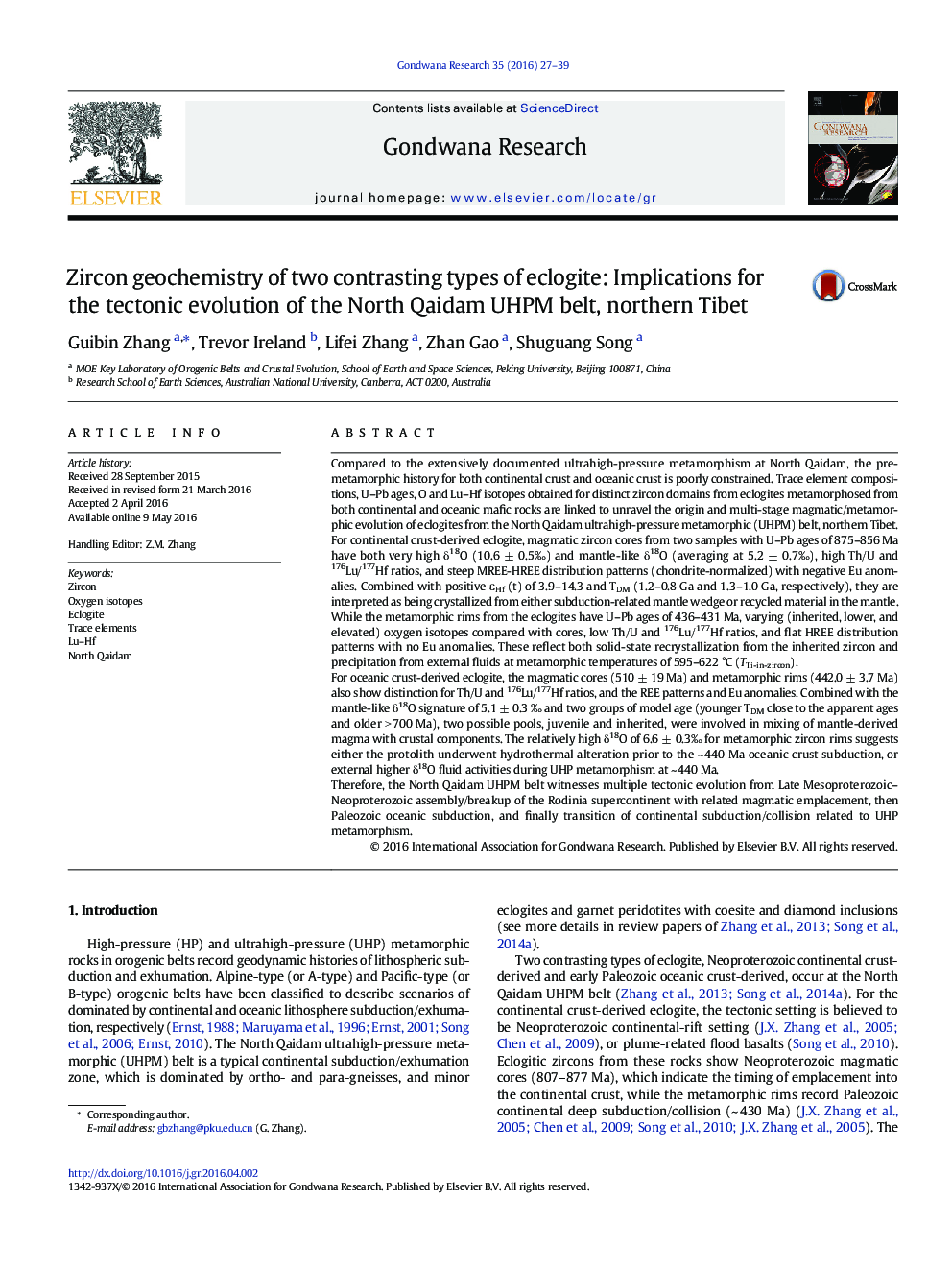| کد مقاله | کد نشریه | سال انتشار | مقاله انگلیسی | نسخه تمام متن |
|---|---|---|---|---|
| 4726586 | 1640136 | 2016 | 13 صفحه PDF | دانلود رایگان |

• Oceanic and continental crust-derived eclogitic zircons from North Qaidam are studied.
• The protolith nature of these two types of eclogite are discussed.
• Ecologitic zircon cores record a Neoproterozoic magmatic emplacement.
• Metamorphic zircon rims record Paleozoic oceanic, then final continental subduction.
Compared to the extensively documented ultrahigh-pressure metamorphism at North Qaidam, the pre-metamorphic history for both continental crust and oceanic crust is poorly constrained. Trace element compositions, U–Pb ages, O and Lu–Hf isotopes obtained for distinct zircon domains from eclogites metamorphosed from both continental and oceanic mafic rocks are linked to unravel the origin and multi-stage magmatic/metamorphic evolution of eclogites from the North Qaidam ultrahigh-pressure metamorphic (UHPM) belt, northern Tibet.For continental crust-derived eclogite, magmatic zircon cores from two samples with U–Pb ages of 875–856 Ma have both very high δ18O (10.6 ± 0.5‰) and mantle-like δ18O (averaging at 5.2 ± 0.7‰), high Th/U and 176Lu/177Hf ratios, and steep MREE-HREE distribution patterns (chondrite-normalized) with negative Eu anomalies. Combined with positive εHf (t) of 3.9–14.3 and TDM (1.2–0.8 Ga and 1.3–1.0 Ga, respectively), they are interpreted as being crystallized from either subduction-related mantle wedge or recycled material in the mantle. While the metamorphic rims from the eclogites have U–Pb ages of 436–431 Ma, varying (inherited, lower, and elevated) oxygen isotopes compared with cores, low Th/U and 176Lu/177Hf ratios, and flat HREE distribution patterns with no Eu anomalies. These reflect both solid-state recrystallization from the inherited zircon and precipitation from external fluids at metamorphic temperatures of 595–622 °C (TTi-in-zircon).For oceanic crust-derived eclogite, the magmatic cores (510 ± 19 Ma) and metamorphic rims (442.0 ± 3.7 Ma) also show distinction for Th/U and 176Lu/177Hf ratios, and the REE patterns and Eu anomalies. Combined with the mantle-like δ18O signature of 5.1 ± 0.3 ‰ and two groups of model age (younger TDM close to the apparent ages and older > 700 Ma), two possible pools, juvenile and inherited, were involved in mixing of mantle-derived magma with crustal components. The relatively high δ18O of 6.6 ± 0.3‰ for metamorphic zircon rims suggests either the protolith underwent hydrothermal alteration prior to the ~ 440 Ma oceanic crust subduction, or external higher δ18O fluid activities during UHP metamorphism at ~ 440 Ma.Therefore, the North Qaidam UHPM belt witnesses multiple tectonic evolution from Late Mesoproterozoic–Neoproterozoic assembly/breakup of the Rodinia supercontinent with related magmatic emplacement, then Paleozoic oceanic subduction, and finally transition of continental subduction/collision related to UHP metamorphism.
Figure optionsDownload as PowerPoint slide
Journal: Gondwana Research - Volume 35, July 2016, Pages 27–39